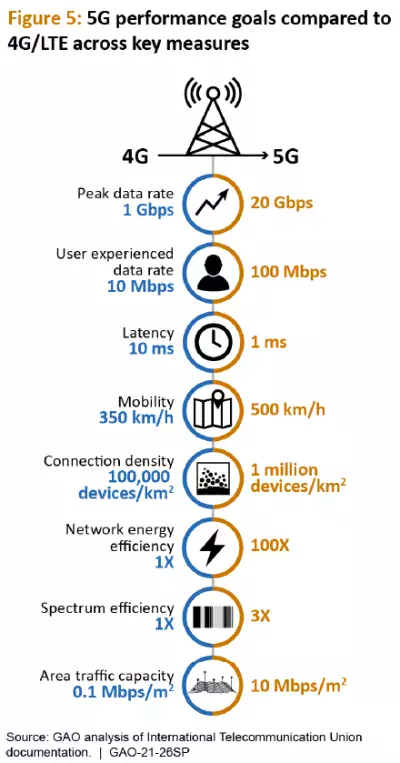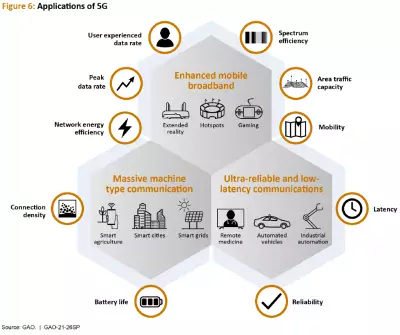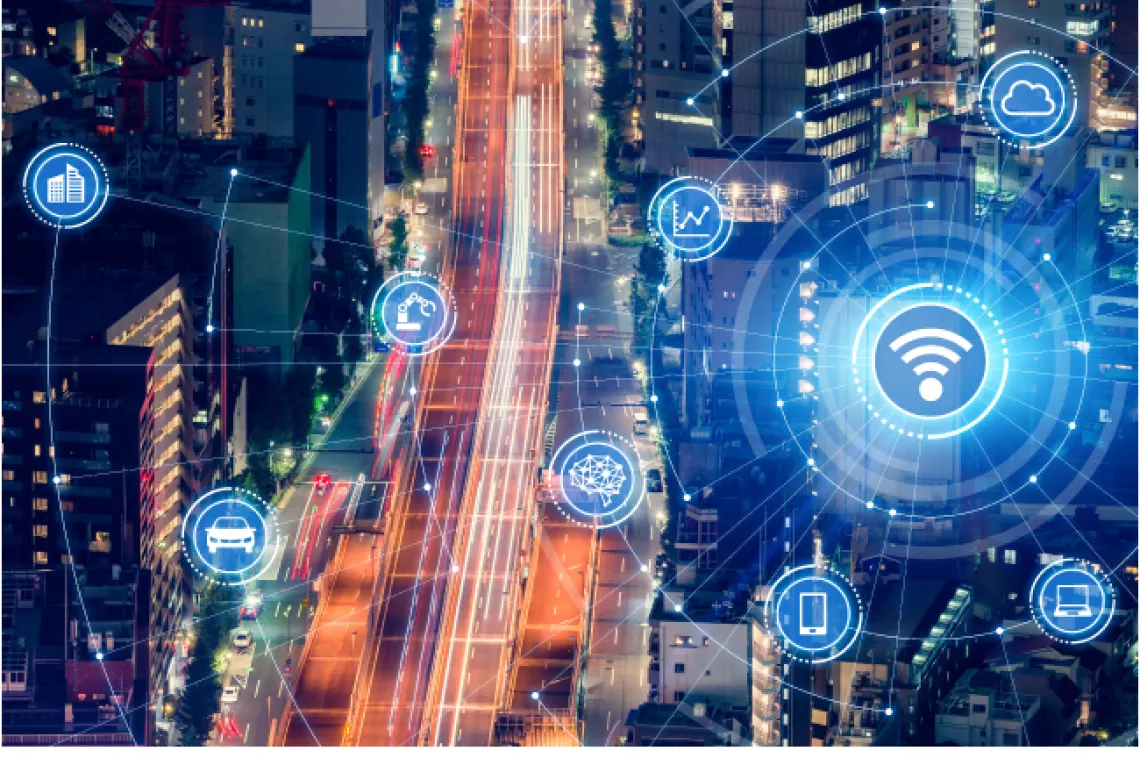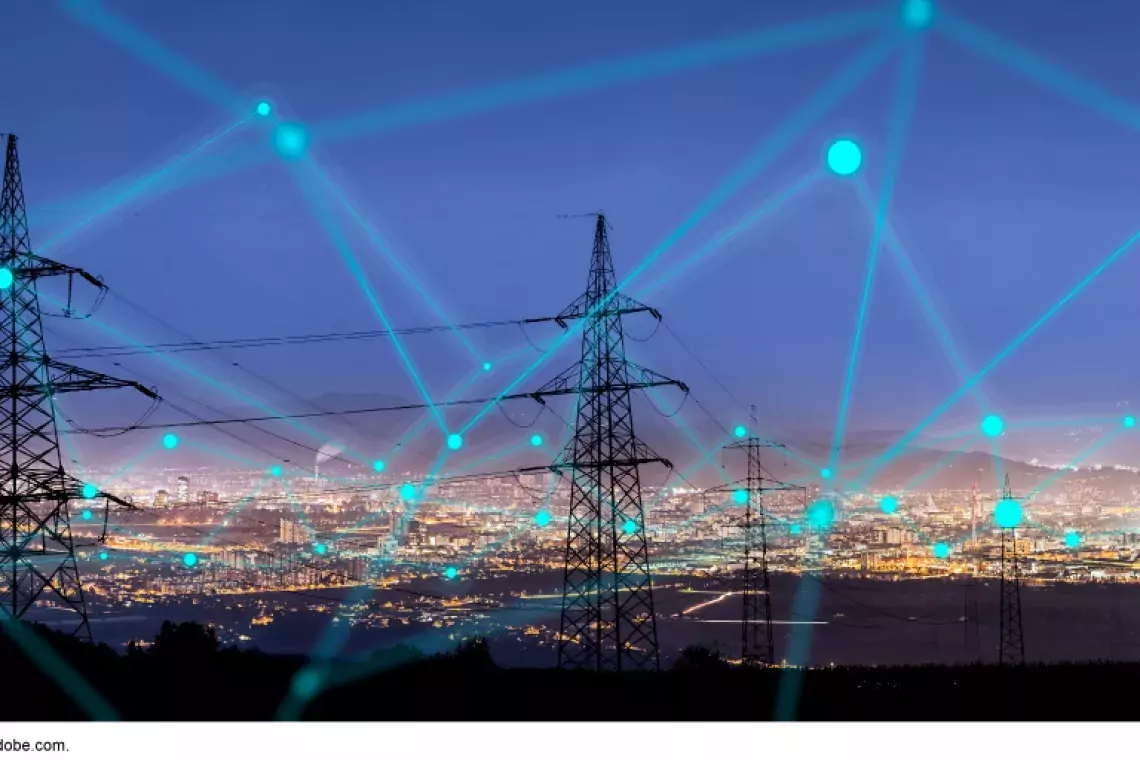What is 5G and Why Does It Matter?
Billed as the next generation of wireless technology, 5G has the potential to transform industries and society now and in the years to come. But what is 5G and what does it make possible?
Today’s WatchBlog explores the latest in our series of reports on 5G and the capabilities and challenges this technology presents.
What is 5G?
5G promises to provide significantly greater speeds and accommodate more devices than current 4G networks. 5G networks also aim to be more flexible, reliable, and secure than existing cellular networks. The figure below compares 4G and 5G on these measures.
Image

What will 5G make possible?
Because 5G will allow for faster communication among more devices, it will enable applications such as 3D video, extended reality—an umbrella term that includes virtual, augmented, and mixed reality—and smart cities (meaning cities that are using data to improve energy use, transportation efficiency, and more). Extended reality applications are expected to impact a wide range of industries, including healthcare, education, transportation, and military. For example, researchers are developing extended reality applications to help fighter pilots maneuver better in poor visibility or darkness. The figure below shows some of the technical advances and anticipated applications of 5G networks.
Image

5G will also allow companies to serve a larger number of more diverse customers and applications over the same network. One way it can do so requires more radio spectrum to be available to 5G. Another way is with a technology known as end-to-end network slicing, which divides network infrastructure into “slices,” with each slice tuned to meet the needs of a particular set of users.
For example, network slicing would allow a wireless carrier to efficiently and simultaneously support connected vehicles, extended reality applications, videoconferencing, and automated industrial machines—above and beyond basic voice or internet access—using the same underlying network.
What challenges do 5G networks present?
Several challenges can arise with the use of 5G, including cybersecurity risks, privacy issues, and concern from members of the public over possible health effects.
For instance, 5G potentially introduces new modes of cyberattack and opens up new points of attack. 5G networks may also exacerbate existing privacy concerns in so far as 5G introduces new kinds of user data to be collected, including more precise location metrics.
Deployment of 5G may also raise new concerns about the effects of radio frequency exposure on public health. Although there is no consistent evidence of the health risks related to radio waves used for 5G, responding to public concerns remains a challenge, in part due to the unknown long-term health effects.
What’s next?
To address these challenges, policymakers could support nationwide, coordinated cybersecurity monitoring of 5G networks, adopt cybersecurity requirements for 5G networks, and put uniform privacy practices in place for user data, among other policy options.
We discuss these options in some of our recent work examining national security considerations surrounding 5G and the challenges to deploying 5G technology.
5G has the potential to connect many more users and devices, but reaching its full potential will require new technologies and cooperation over the next decade.





